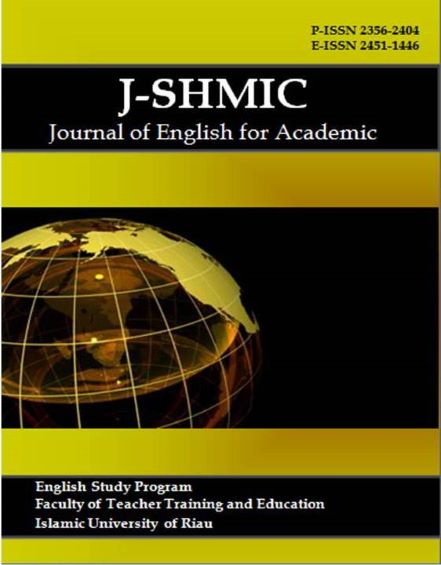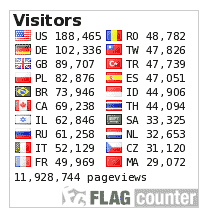The Correlation between University Students’ Vocabulary Learning Strategies and The Vocabulary Mastery Level
The Correlation between The Students' Vocabulary Learning Strategies and Vocabulary Mastery Level
Keywords:
Correlation, Vocabulary, Vocabulary learning strategy, Vocabulary level masteryAbstract
This research was intended to find the correlation between the students’ vocabulary learning strategies and the vocabulary mastery level. The research design of this study was a quantitative research and the study population was the second year students of English study program FKIP Universitas Riau. 41 participants were selected from the second year students of English Study Program FKIP Universitas Riau using the cluster random sampling technique. The instruments of this study were vocabulary learning strategy questionnaire and vocabulary level test. The data showed that 53.7% of students was used the vocabulary learning strategy in learning new vocabularies and 31.7% students were high vocabulary level. Moreover, the result of the study indicated that there was a negative correlation between two variables. The value of correlation coefficient was 0.813. It was on scale 0.00 – 1.00. It meant that the correlation between the students’ vocabulary learning strategies and the vocabulary mastery level of the second year students were categorized as high correlation. This research would assist students to understand the correlation between used the strategy in learning new vocabularies in order to increase the level of vocabulary mastery.
Downloads
References
Afghari, A., &Khayatan, P. (2017). Collaborative Learning and Iranian EFL learners’ Vocabulary Improvement through Snowball and Word-Webbing Techniques. International Journal of English Language & Translation Studies, 5(2), 122-131.
Asgari, A., &Ghazali. (2011). The Type of Vocabulary Learning Strategies Used by ESL Students in University Putra Malaysia. English Language Teaching, 4(2), 84-90.
Baskin, S., Iscan, A., Karagoz, B., &Birol, G. (2017). The Use of Vocabulary Learning Strategies in Teaching Turkish as a Second Language. Journal of Education and Practice, 8(9), 126-134.
Cameron, L. (2001). Teaching languages for young learners. Cambridge: Cambridge University Press.
Gay, G., & Peter, A. (2012). Educational Research. USA: Pearson
Karatay, H. (2007). Vocabulary teaching and learning. Gazi University Journal of Gazi Educational Faculty, 27(1), 141-153.
Martyn, D. (2010). The Good Research Guide. New York: Open University Press.
Masyhur, Marzuki Z, H., & S, Y. (2019). Vocabulary Size of Students of English Study Program of FKIP Universitas Riau; A Cross-Sectional Study. Proceeding of the SS9 & 3rd URICES (pp.664 – 670). Pekanbaru, Indonesia: Unri.ac.id.
Nurbayani, E. (2012). PenilaianAcuanPatokan (PAP) di Perguruan Tinggi (PrinsipdanOperasionalnya. Journal of Education, 12 (1), 1-9.
Satrio, B. (2010). ModulPelatihan SPSS (AplikasiPadaPeneliatianSosial). Lampung: UniverisitasMuhammadiyah Lampung.
Webb, S., Sasao, Y., &Ballance, O. (2017). The updated Vocabulary Levels Test: Developing and validating two new forms of the VLT. ITL – International Journal of Applied Linguistics, 168(1), 33-69.
Published
How to Cite
Issue
Section
This is an open-access article distributed under the terms of the Creative Commons Attribution-ShareAlike 4.0 International License which permits unrestricted use, distribution, and reproduction in any medium. Users are allowed to read, download, copy, distribute, search, or link to full-text articles in this journal without asking by giving appropriate credit, providing a link to the license, and indicating if changes were made. All of the remixes, transform, or build upon the material must distribute the contributions under the same license as the original.











